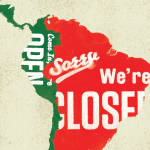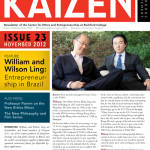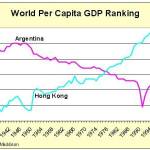In The Wall Street Journal, David Luhnow contrasts “The Two Latin Americas” — one oriented to the Atlantic and statism and the other oriented to the Pacific and markets.
and the other oriented to the Pacific and markets.
“In 2014, the Pacific Alliance trade bloc (consisting of Mexico, Colombia, Peru and Chile) is slated to grow an average of 4.25%, boosted by high levels of foreign investment and low inflation, according to estimates from Morgan Stanley. But the Atlantic group of Venezuela, Brazil and Argentina—all linked in the Mercosur customs union—is projected to grow just 2.5%, with the region’s heavyweight, Brazil, slated to grow a meager 1.9%.”
Worth digesting.
Related Kaizen interviews with leading entrepreneurs:
* Enrique Duhau on Entrepreneurial Agriculture in Argentina.
* André Loiferman on Entrepreneurship and Infrastructure in Brazil.
* Surse Pierpoint on Entrepreneurial Logistics in Panama.
* William and Wilson Ling on Entrepreneurship in Brazil.
* Eduardo Marty on Entrepreneurship in Argentina.
Related:
* The two Americas: 13 countries’ GDP. Why are the North American countries spectacularly more prosperous than the Latin American countries? Why are Mexico, Brazil, and Argentina on average twice as wealthy as Venezuela, Cuba, and Peru? And why are the latter three nations on average twice as rich as Bolivia?
* On J. H. Elliott’s 2006 Empires of the Atlantic World: Britain and Spain in America 1492-1830 (Yale University Press).  Elliott’s explanatory hypothesis: Spain’s empire in America was an “empire of conquest” while Britain’s was an “empire of commerce” (p. xv). Though Brazil was originally a Portuguese colony, so some additional connections need to be made.
Elliott’s explanatory hypothesis: Spain’s empire in America was an “empire of conquest” while Britain’s was an “empire of commerce” (p. xv). Though Brazil was originally a Portuguese colony, so some additional connections need to be made.
* Argentina, Hong Kong, and the psychology of belief: Resource-poor Hong Kong’s relatively laissez-faire free market has taken it from poverty to riches. Resource-rich Argentina’s experiments in statism have taken it from prosperity to decline and semi-functionality.